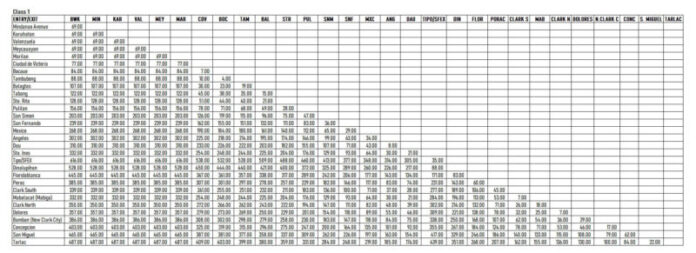-
New toll rates will be higher by P7 to P98 than previously, depending on vehicle type and distance travelled
-
The Toll Regulatory Board announced the fee increase on June 10
-
Finance Secretary Benjamin Diokno said the government has to honor PPP contracts otherwise it will have no credibility in future contracts
Higher North Luzon Expressway (NLEx) toll rates will be implemented from June 15, ranging from an additional P7 to P98, depending on the type of vehicle and distance.
The Toll Regulatory Board (TRB) announced the fee increase on June 10. A day after later, the government sought to explain the fee adjustment, with Finance Secretary Benjamin Diokno noting the approved toll rate increase will be implemented within the next several years on a staggered basis, instead of a one-time imposition.
“[Petitions for toll fee increases] piled up because of the inaction of previous administrations,” said Diokno, who himself was a member of the previous Duterte Cabinet, in a Viber message to reporters.
“The Marcos Junior administration had to act on petitions from 2010,” Diokno said. “The government has to honor its contract or else it will have no credibility in future contracts.”
The TRB said that under the new fee scheme,
These are the additional rates:
- Class 1 vehicles such as cars, jeepneys, vans, and pickup vehicles will pay an extra P7
- Class 2 vehicles buses and light trucks will pay an additional P17
- Class 3 comprising heavy and trailer trucks will pay an additional P19 to use NLEx’s open system
In the NLEx closed system, at all toll gates north of Marilao to Sta. Ines in Mabalacat City, Pampanga, motorists will have to pay an additional:
- P26 for Class 1
- P65 for Class 2
- P77 for Class 3
At Subic-Tipo, an additional P4 for Class 1, P8 for Class 2, and P11 for Class 3 will have to be forked out.
Those traveling on the expressway end-to-end from Metro Manila to Sta. Ines will pay an additional P33, raising the fee to 332 from P299 for Class 1; P81 for Class 2, lifting the fee to P829 from P748 for Class 2; and P98 for Class 3, pushing up the fee to P995 from P897.
The new rates were part of the authorized NLEX periodic adjustments due in 2012, 2014, 2018 and 2020.
The TRB said the increase was based on petitions that had been pending for years, including those dating back to 2012 and 2014. NLEX Corp. holds the concession to the 84-kilometer expressway stretching from Quezon City to Pampanga with toll gates in Balintawak, Caloocan, Mindanao Avenue and Marilao in Bulacan.
The government has 649,198 shares in NLEX Corp., or just 3.46% of the company’s common shares outstanding. Manuel V. Pangilinan’s MPT North Corp. has a 70.78% majority stake. BDO Unibank, EGIS EGIS Investment Partners Philippines Inc., and Global Fund Holdings own the remainder.
Diokno explained that allowing the toll hike is part of promoting public-private partnerships (PPP), in which private firms build and operate infrastructure like highways on behalf of the government for a fixed period, Diokno said. To recoup their investments, concessionaires collect fees from motorists.
“The petitions were carefully studied and analysed. The government needs to perform its contractual obligations under the Supplemental Toll Operations Management,” Diokno said.
“The government will have no credibility as a partner if it does not comply with its contractual obligations under past PPP contracts,” Diokno said.
Aside from rates for the open system of Balintawak, Caloocan, Mindanao Avenue to Marilao, TRB increased the rates for the closed system running north of Marilao to Sta. Ines, the Subic-Tipo Expressway, and for vehicles using the expressway from end to end.
Jeepney drivers with the Pasada Pass, the Tsuper Card discount, and those covered by the rebate program are exempt from the new rate increase.
The toll board allowed NLEX Corp. to implement the last tranche of the 2012 and 2014 periodic toll rate adjustments.
On the other hand, only half of the 2018 and 2020 provisionally approved periodic toll rate adjustments were approved amid existing inflationary concerns and to soften the impact on expressway users.
“The new provisionally approved toll rate adjustments have undergone a very thorough, meticulous and lengthy review and were allowed to be implemented only after NLEx complied with all the procedures and requirements of the TRB,” said the TRB, an agency under the Department of Transportation.





